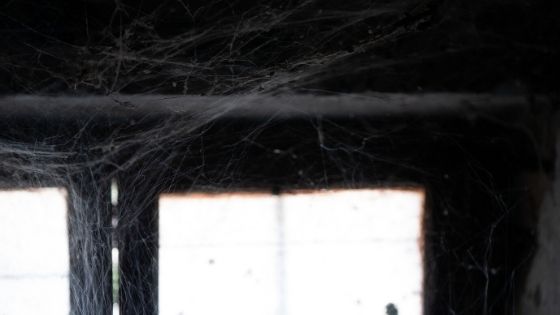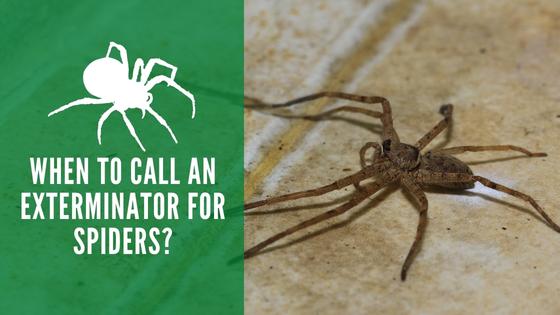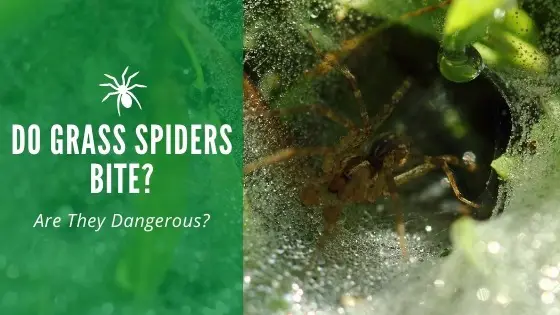Brown Recluse vs Grass Spider
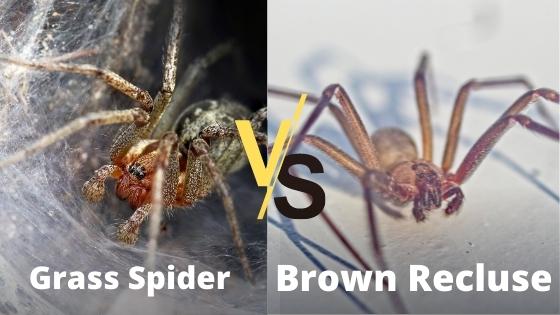
The brown recluse, Loxosceles recluse, Sicariidae, is a spider that has a bad reputation, and for a good reason. They have a venomous bite that can cause a severe reaction in some people.
There are also plenty of cases where someone thinks a brown recluse bit them, but it turned out to be a grass spider. Let’s explore the difference between the brown recluse and some of the more common lookalikes.
Brown Recluse Myth and Fact
Before we delve into identifying a brown recluse, let’s clear up a few common myths and explore some facts about them. The brown recluse is a spider that strikes fear into the minds of most people. The most common reason is that they have a necrotic venom that destroys skin tissues over time and results in scarring or even death.
The truth is that not everyone who a brown recluse spider bites is doomed. Some have mild symptoms or no symptoms at all. Also, there is a wide body of evidence that many other necrotic skin conditions are blamed on brown recluse spiders, such as cases of MRSA, herpes, and staph infections. The most likely to experience a severe reaction are children, the elderly, and people with low immune systems.
The movies and mass media have propagated many of the fears about brown recluse spiders. They are often not aggressive, and most bites occur from accidental contact with the spider.
For instance, the spider might become tangled in a piece of clothing or hide in a pair of shoes that have not been worn often. They certainly deserve respect, but verifiable bites are actually quite rare.
How Can You Tell the Difference Between a Brown Recluse and a Grass Spider?
There are 29 brown recluse look alikes that are often misidentified as brown recluses. The most common is the grass spider. How do you tell them apart?
First, let’s look at the most important identifying characteristics of the brown recluse. The most well-known distinguishing characteristic of the brown recluse is the dark violin-shaped marking on its cephalothorax.
They often have light-colored legs. Their most distinguishing characteristic is that they have six eyes arranged in three groups of two. Two are on each side of the head and the other pair faces forward. Other spiders typically have eight eyes, but the brown recluse has six arranged in this specific pattern.
Brown recluse spiders are not large and generally range between ¼ and ¾ inches. Some can grow as large as an inch, but most are small. They are found in the Southeastern and Southwestern United States and range as far north as southern Ohio in the Cincinnati area.
Many people think that the most important identifying feature is the violin marking on its back, but this is not the best way to identify a brown recluse. Several other spiders have similar markings and are often mistaken for them. Cellar spiders and pirate spiders are two that can also have similar markings.
The brown recluse can have color variations. They can have a cephalothorax and abdomen that are not the same color. They can range from whitish to blackish gray or dark brown. They can also be many ranges of brown in between.
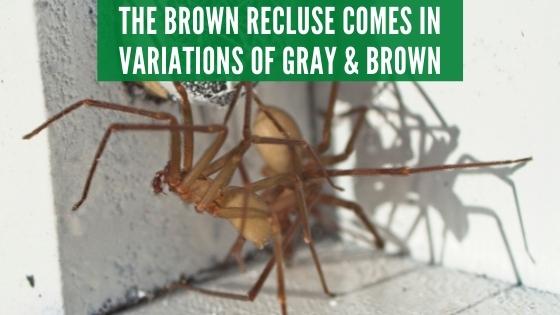
Coloration and markings are not the best way to tell if a spider is a brown recluse because there are many coloring and marking variations. Also, too many other spiders have similar markings. The most important identifying feature is the distinctive eye pattern.
The grass spider is one of the most common spiders that is misidentified as a brown recluse. The grass spider is about the same size as a brown recluse. They can be gray, brown, black, or beige. They can also be a combination of these colors. The main difference is that the grass spider has bands or stripes that run along the entire length of its abdomen.
Brown recluses tend to have a more uniform color and lack the striping of the grass spider. The grass spider has a wider distribution range than the brown recluse and can be found all over the United States, including colder climates.
Is There a Spider that Looks Like a Brown Recluse?
We mentioned that 29 spiders are commonly mistaken for the brown recluse. These include:
- Southern house spider
- Arizona black hole spider
- Giant house spider
- Barn funnel weaver
- Hobo spider
- Cellar spiders
- Wood house spider
- Eurasian running crab spider
- Wolf spiders
- Huntsman spider
- American nursery web spider
- Wall spider
It is easy to see how some of these could be confused with the brown recluse, but many of them do not even look close. It seems that any brown spider is in danger of being accused of being a brown recluse to the untrained eye.
Are Grass Spiders Venomous?
Grass spiders are mildly venomous but not as venomous as the brown recluse. The venom of a grass spider is not considered harmful to humans. Like the brown recluse, a bite from a grass spider is rare.
They are fast and use this to subdue prey. They also use their lightning-fast speed to escape danger. They would much rather run from you and get away than bite you when given a choice.
If you happen to get bitten by a grass spider, the most important thing you need to worry about is the risk of infection. Many times, the spiders cannot even penetrate your skin, and they usually cannot bite through clothing. They pose only minimal risk to humans.
Web Comparison Between Brown Recluse and Grass Spiders
Webs are a common way to identify many types of spiders. Grass spiders are what are known as tunnel weavers, and brown recluses weave a tangled web. The grass spider web is in the shape of a tunnel (or funnel).
It is not sticky. The grass spider hides deep in the tunnel. When the unsuspecting insect decides to go down the tunnel, the grass spider moves in the blink of an eye to bite it and immobilize it.
Brown recluses are hunting spiders that like to chase down their prey rather than catch it in a web. They do not build a web and then sit in them and wait for prey to come by. The web of the brown recluse is used as a retreat and for laying eggs.
The brown recluse prefers to build its webs in crevices and places that are hidden away. They prefer undisturbed, dark locations. Some common places you might find a brown recluse web include basements, shoes, old boxes, and under furniture.
Now you know a little more about identifying a brown recluse and some of the more common lookalikes. They do not live up to their overinflated reputation that has been portrayed in the media, but they still deserve an extra ounce of caution. They are fascinating, but you still do not want to accidentally get bitten while putting your foot into your shoe, so it is a good idea to look first.
Sources:

